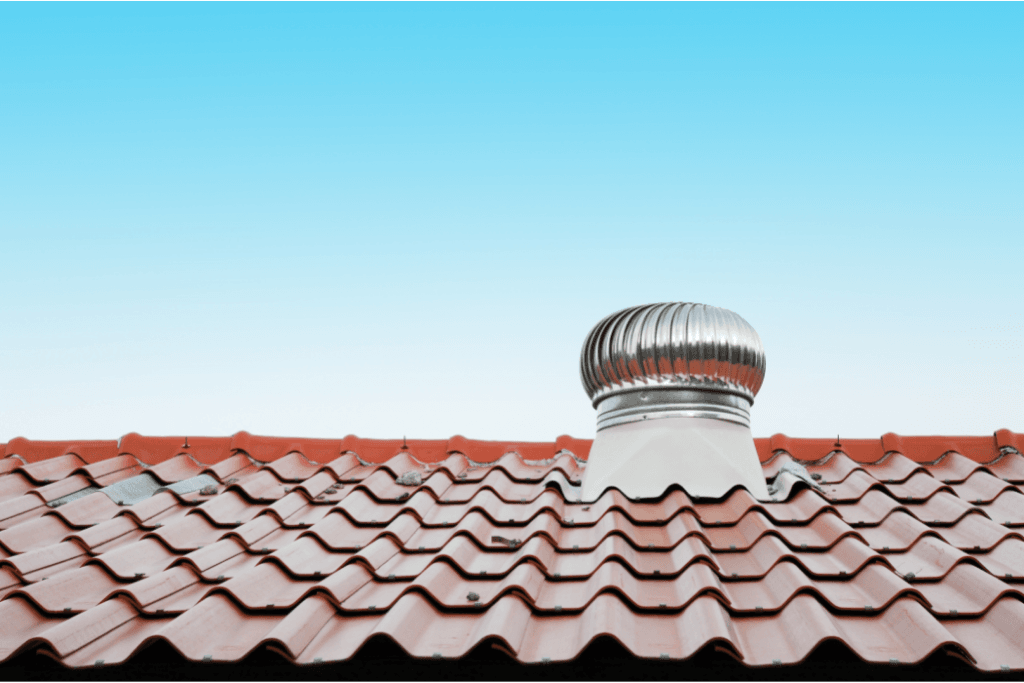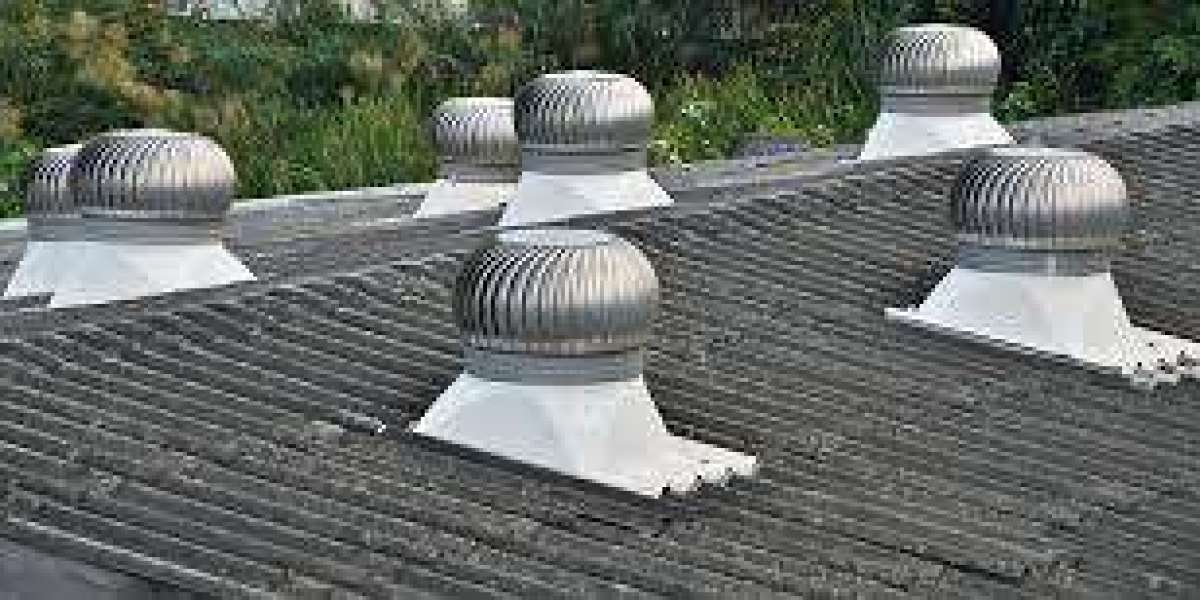Roof Ventilators: How They Improve Roof and Home Health
Roof ventilators are crucial components in roofing systems that help maintain proper air circulation in your attic or roof space. Poor ventilation can lead to multiple issues, including mold growth, increased energy bills, and premature roof deterioration. Installing roof ventilators can solve these problems by regulating temperature, moisture, and airflow. In this guide, we’ll explore how roof ventilators work, the benefits they offer, and tips for choosing the right ventilator for your home.

Types of Roof Ventilators for Effective Ventilation
When it comes to roof ventilation, selecting the right roof ventilators is key. There are several types of ventilators, each serving a different purpose depending on your needs. Understanding these variations can help you optimize your home’s ventilation system.
Ridge Ventilators
Ridge ventilators are installed along the peak of the roof, allowing hot air to escape from the highest point of your attic. These roof ventilators work passively, relying on natural airflow to expel warm, moist air while pulling cooler air in through soffit vents. Ridge ventilators are ideal for homes in warmer climates, as they maintain a steady flow of air throughout the attic.
Turbine Ventilators
Turbine roof ventilators, also known as whirlybirds, use wind to spin the turbine and draw out stale air from the attic. As the turbine rotates, it creates a suction effect that helps release built-up heat and humidity. These ventilators are highly effective in areas that experience consistent breezes, offering low-maintenance, energy-efficient ventilation for your roof.
Solar-Powered Roof Ventilators
Solar-powered roof ventilators use energy from the sun to power small fans that actively push air out of the attic. They are eco-friendly and highly efficient in maintaining airflow, especially during hot summer months when your attic may get unbearably warm. Solar-powered ventilators can help reduce energy costs by easing the load on your air conditioning system.
Gable Ventilators
Gable roof ventilators are mounted on the gable ends of the roof. They work similarly to ridge ventilators but are positioned on the vertical sides of the house. Gable ventilators can be either passive or powered by electricity or solar energy to improve air circulation. These ventilators are a great option if your roof design does not allow for ridge or soffit vents.
Benefits of Roof Ventilators: Why They Matter
Proper roof ventilation is often overlooked, but it plays a significant role in the longevity of your roof and the comfort of your home. Installing roof ventilators offers numerous benefits that can save you time and money in the long run.
Prevents Moisture Damage
One of the main functions of roof ventilators is to control moisture levels within your attic. When moisture builds up due to poor ventilation, it can lead to issues like mold, mildew, and even wood rot. Roof ventilators keep moisture at bay by promoting airflow, which prevents condensation from forming.
Reduces Energy Bills
During hot months, heat can build up in the attic and cause your home to feel warmer. This forces your air conditioning system to work harder to cool your living space. Roof ventilators help release trapped heat, making it easier to maintain comfortable indoor temperatures and lowering your energy bills.
Extends Roof Lifespan
Excessive heat in the attic can lead to premature aging of roofing materials, such as shingles and underlayment. By improving airflow with roof ventilators, you can protect your roof from unnecessary wear and tear, extending its lifespan and preventing costly repairs.
Enhances Indoor Comfort
Properly ventilated attics reduce the risk of temperature fluctuations inside your home. Roof ventilators help regulate the overall temperature, ensuring a more consistent and comfortable living environment throughout the year, especially in hot or humid conditions.
Common Questions About Roof Ventilators
How do roof ventilators work?
Roof ventilators work by allowing air to flow in and out of the attic. They release warm, moist air while pulling in cooler, drier air, which helps maintain a balanced temperature in the attic and prevents heat buildup.
Do I need roof ventilators for my home?
If you have an attic or roof space, installing roof ventilators is highly recommended. Without proper ventilation, your roof and attic can experience moisture damage, increased energy bills, and reduced roof lifespan.
Can roof ventilators save energy?
Yes, roof ventilators can significantly reduce energy costs by improving the efficiency of your HVAC system. By expelling hot air from the attic, they help reduce the amount of work your air conditioner has to do to keep your home cool.
What is the difference between passive and powered roof ventilators?
Passive roof ventilators rely on natural airflow to remove heat and moisture, while powered ventilators use electricity or solar energy to actively push air out of the attic. Both types are effective, but powered ventilators can be more efficient in homes with limited natural airflow.
Tips for Choosing the Right Roof Ventilators
Selecting the right roof ventilators for your home depends on various factors such as climate, roof design, and attic size. Here are a few tips to help you make the best choice for optimal ventilation.
Consider Your Climate
If you live in a hot, humid climate, opt for roof ventilators that can handle excess heat and moisture. Solar-powered or turbine ventilators are excellent choices for areas that experience long summers. In cooler climates, ridge or gable ventilators may be sufficient for maintaining airflow.
Match the Ventilator Type to Your Roof
Not all ventilators are compatible with every roof design. Homes with sloped roofs may benefit more from ridge ventilators, while homes with flat or low-slope roofs can benefit from gable or turbine ventilators. Ensure the ventilator type you choose aligns with your roof structure.
Evaluate Energy Efficiency
If energy efficiency is a priority, consider installing solar-powered ventilators. These ventilators not only save you money on electricity but also operate efficiently during the hottest parts of the day when attic temperatures are at their highest.
Professional Installation Matters
Roof ventilators must be properly installed to work effectively. Improper installation can lead to air leaks, insufficient ventilation, and even roof damage. It's best to hire a professional roofing contractor like Oscar Roofing, located at 16 Erla Ct, Markham, ON L3S 3B3, Canada. Contact them at 416-880-9692 or via email at info@oscarroofing.ca for expert installation services.
Final Verdict on Roof Ventilators
Roof ventilators are essential for maintaining a healthy and efficient home. They offer numerous benefits, including preventing moisture damage, reducing energy costs, and extending the life of your roof. Whether you opt for ridge, turbine, or solar-powered ventilators, ensure that your home has the proper ventilation to avoid common roofing issues. For professional advice and installation, reach out to Oscar Roofing in Markham, Ontario. They specialize in roofing solutions and can help you choose the best roof ventilators for your home.
By improving your roof’s ventilation system, you not only protect your investment but also ensure a comfortable living environment. Investing in the right roof ventilators is a proactive step toward better roof health and energy efficiency.




